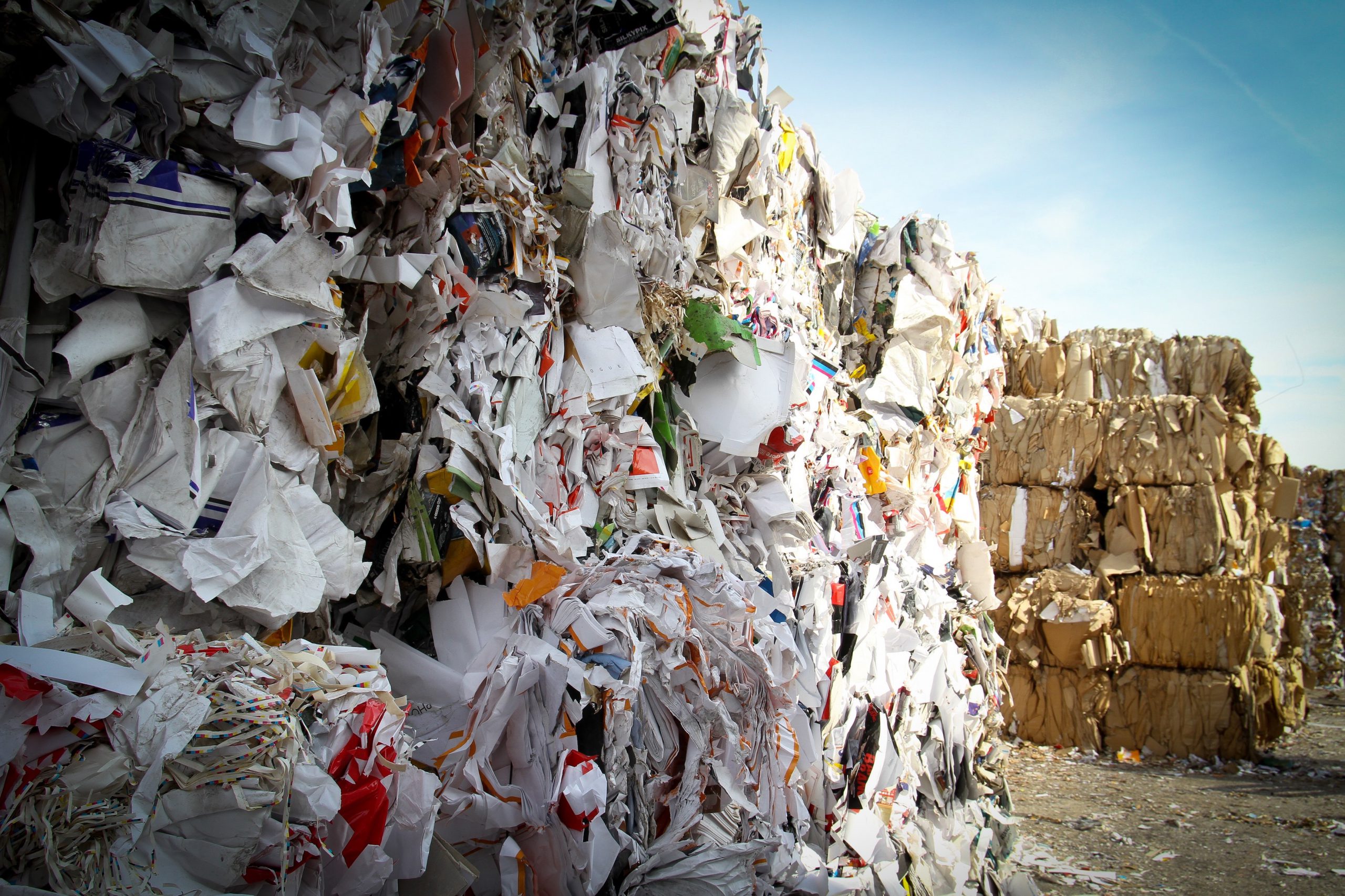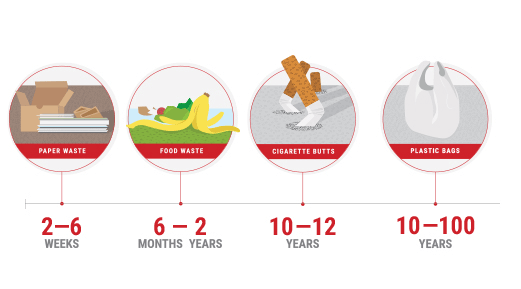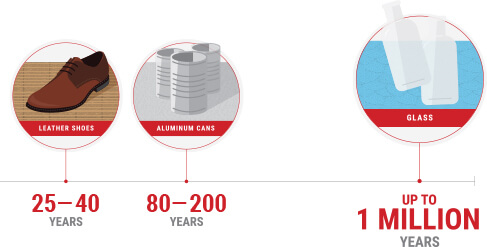
Knowing what happens to our waste might become a trigger to change our daily routines. Being aware how quickly rubbish bags fill up and what is inside them helped me change my habits. As one of my blog guests describing going zero waste said: “Start by observing your daily habits and your waste bins! The easiest is to commence in a bathroom. What do you find inside your bin there? And what could be the eco alternatives to reduce waste?”
Surprisingly (or not) observing my garbage suppressed my appetite for retail therapy or unnecessary purchases. It also turned me into a ‘strict recycler’ and a conscious consumer. Conscious when it comes to knowing who I buy from but also what kind of materials are my products made of, and what will happen to them after I throw them away.
Here are a few facts (some obvious, some shocking) about our waste and what really happens when rubbish trucks take our garbage away.
How a landfill works
Let’s start with unpicking the way landfills are created and what kind of jobs are they designed to do.
Waste pollution across the world
The EU-27 generated, on average, 1.8 tonnes per inhabitant of waste excluding major mineral waste in 2018.
Eurostat
The UK, like most developed nations, produces more waste than it can process at home: 230m tonnes a year – about 1.1kg per person per day.
Gov.uk
The US, the world’s most wasteful nation, produces 2kg per person per day.
The Guardian
Of the 8.3bn tonnes of virgin plastic produced worldwide, only 9% has been recycled.
2017 Science Advances paper
How long does it take to decompose
To understand well what happens with our waste, it’s good to know how materials are breaking down into other matter. And it is handy to understand the difference between various processes: composting, degradation and biodegradation. Let’s start with definitions.
Composting
Compostable items are designed to be composted in a compost heap only. Composting is a very specific process which does not occur in landfills. There are many types of composting methods. In each case, the ideas is to turn organic materials into:
- substances that can be used to improve the soil,
- compost, or
- generation of heat and power and producing a fertiliser.
And when it comes to a label stating “compostable”, this means that the product “can” be turned into compost as long as it’s under the correct conditions. And when some materials: food or paper need very basic composting conditions, compostable plastics (bioplastics) need industrial composting conditions.
Biodegradation
According to the American Society for Testing and Materials (ASTM) biodegradables are anything that undergoes degradation resulting from the action of naturally occurring microorganisms such as bacteria, fungi, and algae. Which simply means that it breaks down into its natural elements, namely water, carbon dioxide, and biomass. But not everything that’s biodegradable breaks down in a reasonable amount of time.
Therefore, if you see a label “biodegradable” this means it will eventually break down if that product were to end up in a landfill. But don’t expect it to be very fast. Always check how long it will actually take.
Degradation
Degradation means breaking down of materials with these processes happening very, very slowly, as landfills are designed to prevent it (to keep them stable and avoid sinking). For example, petroleum-based plastics and other heavy metal and chemical based materials never break down fully into their natural elements to be repurposed by the earth. Plastics can break down:
- in the sunlight (photo-degradable), or
- break into smaller pieces called microplastics.
And we all heard about omnipresence of microplastics in every corner or our planet and in our food chain. Sadly now it has also been proven that they can be found in the placentas of unborn babies.
Even worse, according to Greenpeace, “Every single piece of plastic ever made still exists.”
What happens to our waste in years…
By being unaware of how long it actually takes for everyday materials to decompose in landfills, we often neglect recycling. Or we buy unnecessary items not in a naked packaging but either wrapped in plastic or made from hard to break materials. Here is how long it takes from the longest to shortest.
Plastic bags – 1000 years
They beat the record and can take any time between 10-1000 years to decompose in landfill. Despite plastic bags bans spreading across the globe, National Geographic states that: “plastic production is forecast to double by 2040, and may account for 20% of the world’s oil production by 2050.”
Plastic bottles – 450 years
While they take slightly less time, it is stil a hefty 450 years.
Aluminium cans – 200 years
Across the world recycling of aluminium cans seem to be of a success story, with Brazil recycling as much as 98.2% of its aluminium can production. But many nations throw away tonnes of aluminium to landfills, where it takes between 80 – 200 years to decompose. And eco credentials of aluminium cans are not as black and white. According to Reuters, “The aluminium industry can play on the fact that its product is infinitely recyclable, and they’re right, but primary aluminium uses huge amounts of electricity and it’s also got some chemical releases of greenhouse gas emissions.”
Batteries – 100 years
While they are indispensable for many household items, it takes them about 100 years to fully decompose.
Leather shoes – 40 years


More ideas
If this blog inspired you to start your zero waste journey, see how it can be done. Or if you want to learn recycling basics, read this article.
